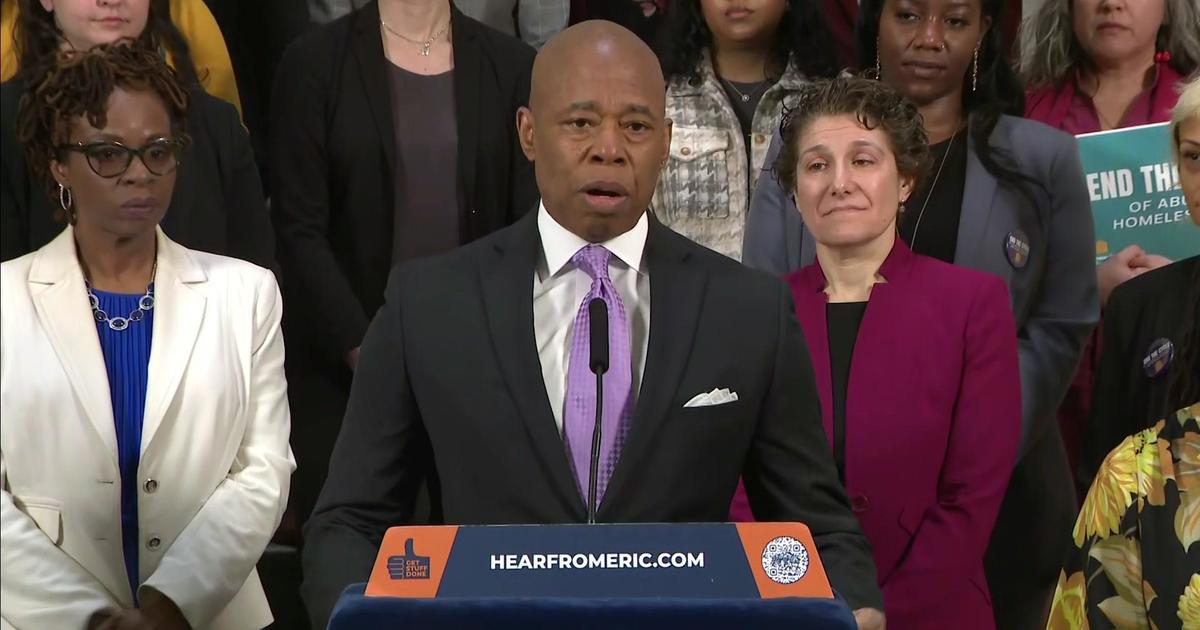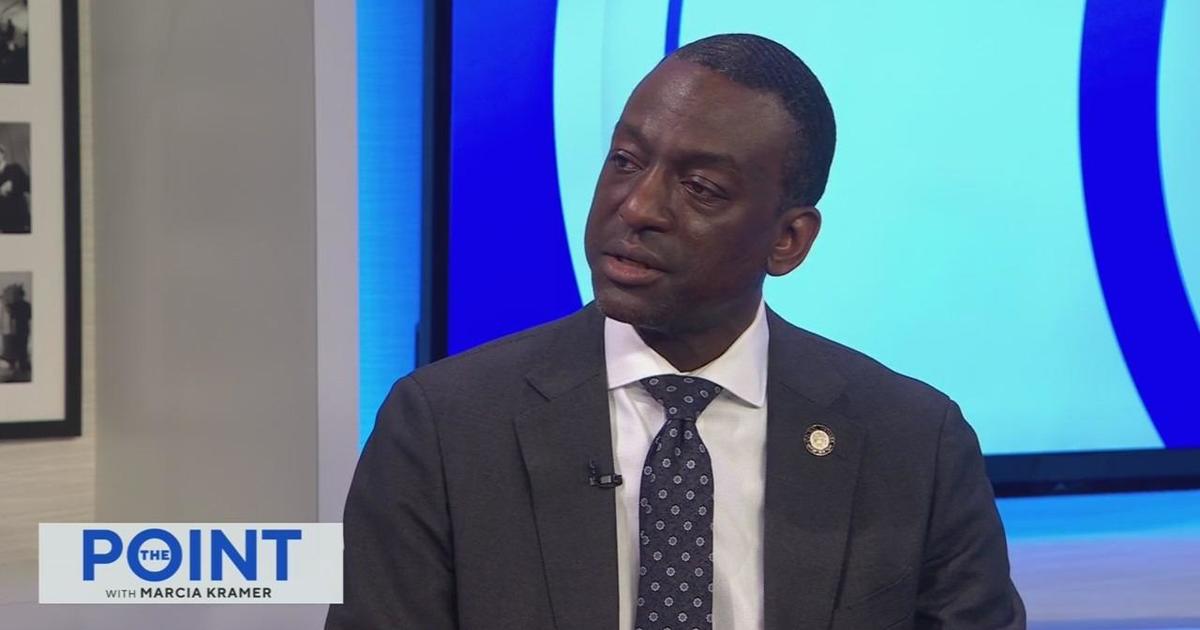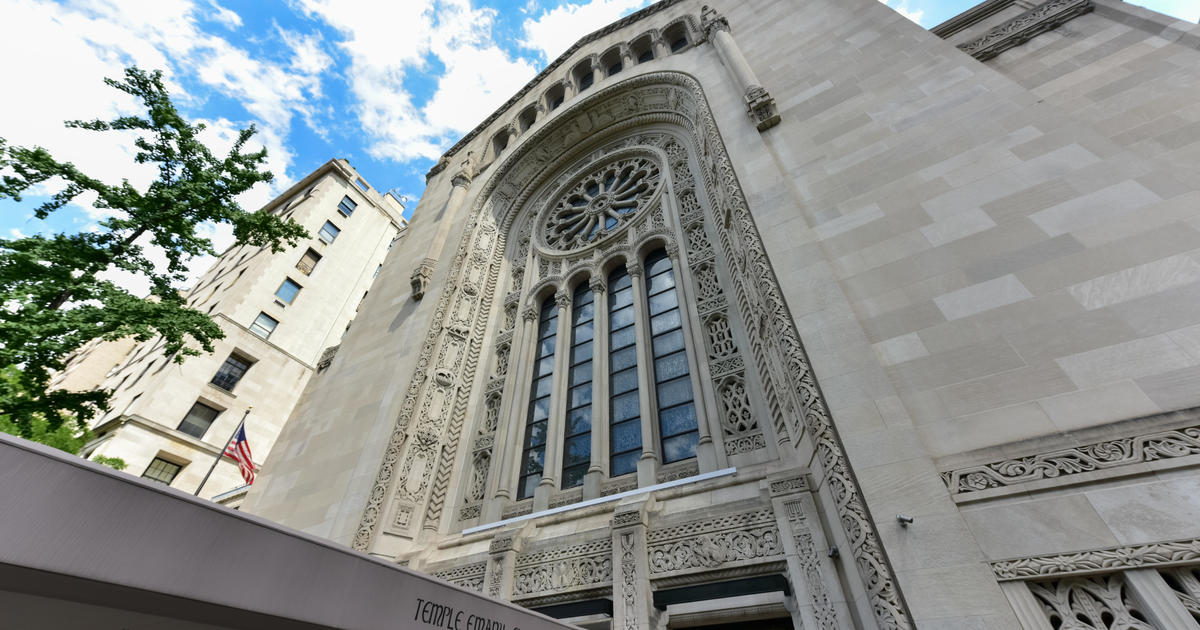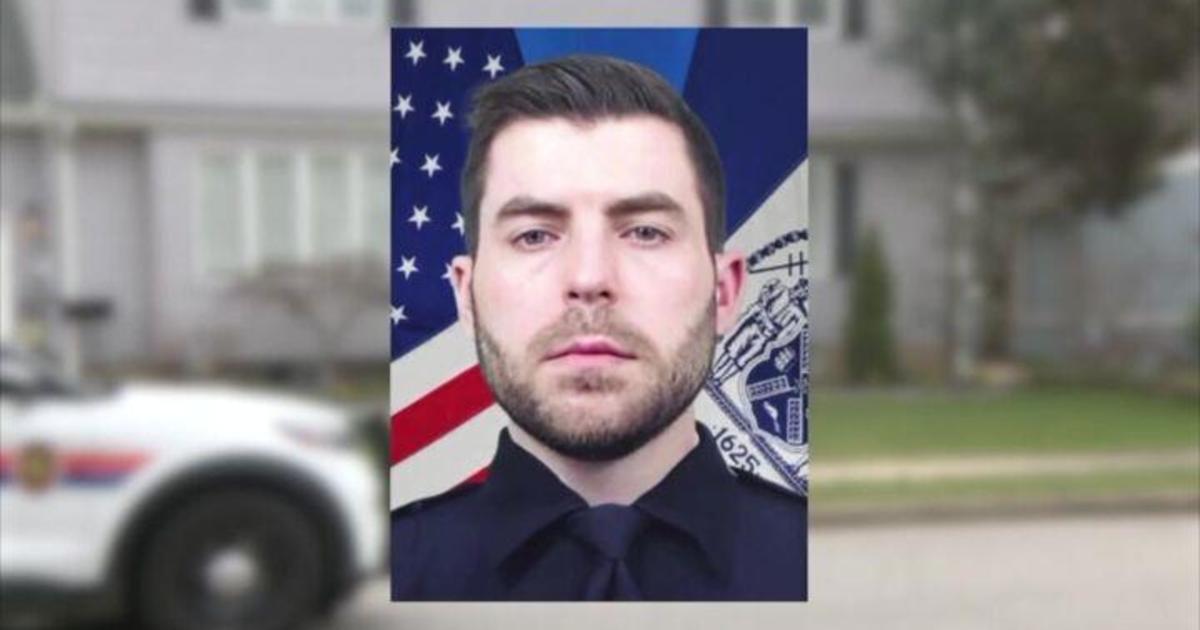Mayor Eric Adams' zero tolerance subway enforcement takes effect after violent weekend
NEW YORK -- Mayor Eric Adams' subway safety plan got off to a rather inauspicious start after a weekend of violence on the rails. There were eight separate incidents, including six stabbings and a man who swung a hatchet at two straphangers in Crown Heights.
As CBS2's Marcia Kramer reported Monday, the pressure is on the mayor to create a perception of safety and some viable assistance for the homeless.
It's an image that tells you everything you need to know about how safe straphangers feel on the subways -- Stephanie Perez of the Bronx standing far, far away from the edge of the platform.
"By the doors, by the wall," Perez said, confirming her fears of being pushed.
Then there is another image that goes to subway safety -- the hatchet used in an attempted assault on two riders on the No. 4 train Franklin Avenue platform in Crown Heights. It was among eight incidents over the weekend, stabbings and assaults that stoke the perception the subways are not safe.
"What do you want the mayor to do about it?" Kramer asked Perez.
"I don't know. What can he do?" Perez responded.
But with the mayor's zero tolerance subway safety plan taking effect Monday, a spokesman for Adams tried to downplay the recent violence.
"As the mayor made clear on Friday, there are no quick fixes for these issues that have been ignored for far too long. This plan is a first step towards ending homelessness in our subways, providing comprehensive mental health services to those in need, and keeping all New Yorkers safe while using our transit system," press secretary Fabien Levy said.
The violence is sparking calls for more cops.
"He should probably put more security down here, like actual cops sitting here," said Evan Comer of Hell's Kitchen.
The mayor said that for New York City to make a full recovery from the pandemic people have to take the subways and feel safe doing it, but criminal justice experts say it's not just about hiring more cops.
"You start by making it look like it's safe. Change, you know, fix the lightbulbs that are burnt out, clean out the garbage. I mean I was in the city the other day and I'm dodging bottles and cans on the subway platforms and on the staircases," said Joe Giacalone of John Jay College of Criminal Justice.
MTA officials say many of those problems are caused by the homeless, which underscores the need for the new subway security program, which , a spokesman said, "has joint response groups, made up of NYPD officers and community-based outreach teams, patrolling and providing assistance to those in need. This makes clear the subways are only for transportation."
The first part of the new plan is for cops to enforce transit rules, prohibiting things like sleeping across multiple seats, exhibiting aggressive behavior, and creating an unsanitary environment.
Cops will also require -- not recommend -- riders clear trains at the end of the line, though CBS2's Ali Bauman reported seeing no such thing at the end of the line in Coney Island on Monday night.
"I'm afraid of something happening. Not only my kids, everyone here, we're not safe," commuter Olga Altamirano said.
"It's a quality-of-life issue and if you talk to any New Yorker and they'll tell you it's very important," commuter Barry Swady said.
"That's why I'm literally standing like this, because it's scary," added Danielle Dwerling of Washington Heights.
The mayor insists enforcement will not be heavy handed, adding 30 teams of outreach workers will be joining police to help remove those who are making the subways their home.
The latest stats show crime in the subway is up nearly 61% so far this year -- 320 crimes compared to 199 in the first two months of 2021.




